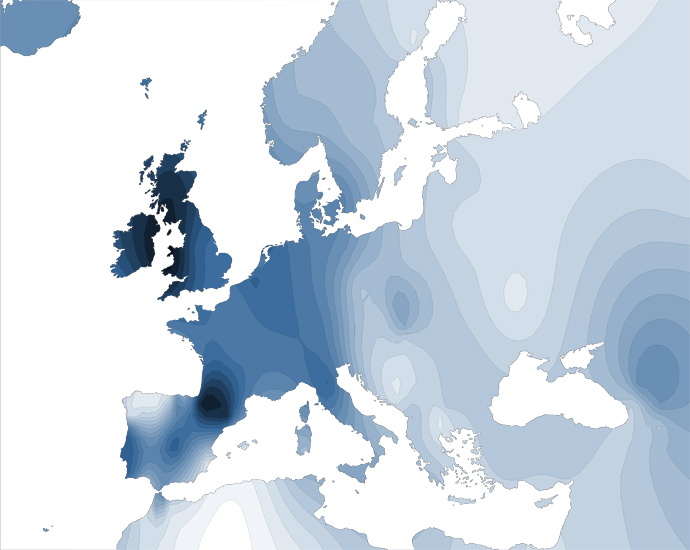| Y-chromosome Haplogroups |
In addition to your Y-chromosome STR results, we are able to accurately predict which "haplogroup" your Y-chromosome belongs to. Haplogroups can be thought of as branches of the Y-chromosome genetic tree. With its roots in Africa approx. 140,000 years ago, as time has progressed, small mutations have occurred on the Y-chromosome. When a mutation happens (called a SNP, pronounced "snip"), the tree branches so that over time and as people have migrated into different continents and regions, we see a tree-like structure with branches found in certain parts of the world.
Because particular STR patterns are seen within particular haplogroups, on most occasions we can predict which haplogroup you are in and where your Y-chromosome fits into this Y-chromosome tree. Along with the prediction, we also provide the history, background and mapped distribution of your haplogroup.
Please be aware that, whilst our comparative database uses up to date information, it may not be possible to make an accurate prediction on all occasions and sometimes no prediction can be made.
| Your Predicted Haplogroup: R1b |
Haplogroup R1b, defined by the SNP marker M343, is part of the ancestral R1-M173 of which ancestors first arrived first arrived in Europe from West Asia during the Upper Paleolithic period (35,000-40,000 years ago) at the beginning of the Aurignacian culture. This culture is one of the first within Europe to leave cave-art and their stone tools were more refined than previous periods. The Périgordian culture is also considered by some to have existed at this time. As the last ice-age began, it became necessary to move down to below the tree-line to hunt game. At its peak, the ice shelf within Europe extended down as far as southern Ireland, the middle of England and across northern Germany. Scandinavia was entirely covered. The sea-ice pack extended as far as northern Spain and tundra covered much of continental Europe. The tree-line at the height of the ice-age was as far south as Southern France, Northern Italy, north of the Balkans and across the Black Sea.
People with Haplogroup R1 Y-chromosomes retreated to below these regions where they established themselves. During this period, the mutation which defines R1b (M343) likely developed within the Iberian Peninsula. As the ice-age ended and the fauna and flora were able to move northward again, people in R1b also migrated north. Haplogroup R1 appears in about 50% of the total European whereas R1b remains by far the most common haplogroup in Western Europe (Spain, Portugal, France, UK and Ireland). R1b3, one of the most successful clades, has it's origins about 11,800 years ago. Within the British Isles, a genetic pattern called the Atlantic Modal Haplotype (AMH) features greatly among the Irish and Welsh. Some researchers consider this haplotype to be representative of the early Celtic migrations. Haplogroup R1b is prevalent within South America given the influx of Iberian Y-chromosomes to the continent over the last 500 years.
| Distribution of Haplogroup R1b |
